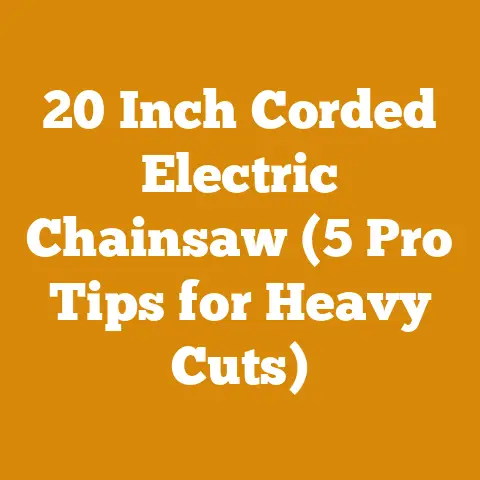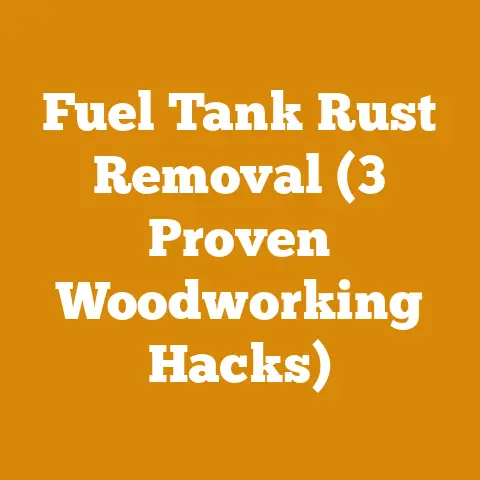Central Boiler 7260 vs E-Classic 3200 (Wood Heat Efficiency Showdown)
Would you rather shiver through another winter relying on expensive fossil fuels, or take control of your home heating with the raw power and cost-effectiveness of wood? If you lean towards the latter, then you’re in the right place. Today, we’re diving headfirst into the heart of wood-fired heating: the Central Boiler 7260 versus the E-Classic 3200, in a wood heat efficiency showdown.
The State of Wood Heat: A Global Perspective
Before we get down to brass tacks, let’s take a quick look at where the wood heating industry stands. Globally, the resurgence of wood as a primary or supplementary heating source is driven by a potent mix of factors: rising fossil fuel costs, environmental concerns, and a desire for energy independence. In North America, for instance, wood heating accounts for a significant percentage of residential heating, particularly in rural areas. According to the U.S. Energy Information Administration (EIA), wood energy contributes approximately 2% to the total primary energy consumption in the United States.
But it’s not just a North American phenomenon. In many parts of Europe, Asia, and even South America, wood remains a vital energy source, especially in regions with abundant forests. This renewed interest has spurred innovation in wood heating technology, leading to more efficient and cleaner-burning stoves and furnaces.
Now, with that context in mind, let’s get down to the nitty-gritty of choosing the right wood boiler.
Central Boiler 7260 vs. E-Classic 3200: A Wood Heat Efficiency Showdown
Choosing a wood boiler is a significant investment, and it’s crucial to get it right. Both the Central Boiler 7260 and the E-Classic 3200 are heavy hitters in the outdoor wood furnace market, but they cater to different needs and priorities. I’ve spent years working with wood-fired systems, and I’ve seen firsthand the impact the right (or wrong) boiler can have. Let’s break down the key aspects to help you make an informed decision.
Understanding Outdoor Wood Furnaces
First, let’s define what we’re talking about. An outdoor wood furnace, also known as an outdoor wood boiler, is a self-contained unit that heats water, which is then circulated to your home or other buildings for heating. These furnaces are located outside the home, eliminating the mess and potential fire hazards associated with indoor wood stoves.
Key Concepts:
- Green Wood vs. Seasoned Wood: Green wood is freshly cut and has a high moisture content (often above 50%). Seasoned wood has been dried for a period of time, reducing the moisture content to around 20% or less. Seasoned wood burns much more efficiently and produces less smoke.
- BTU (British Thermal Unit): A BTU is a unit of energy. It’s the amount of energy required to raise the temperature of one pound of water by one degree Fahrenheit. Wood boilers are rated by their BTU output, which indicates their heating capacity.
- Efficiency: The efficiency of a wood boiler is the percentage of the wood’s energy that is converted into usable heat. Higher efficiency means less wood consumption and lower operating costs.
- Gasification: A process where wood is heated to high temperatures in a low-oxygen environment, producing combustible gases that are then burned. Gasification boilers are typically more efficient and cleaner-burning than conventional wood boilers.
Central Boiler 7260: The Workhorse
The Central Boiler 7260 is known for its robust construction and high BTU output. It’s designed for larger homes, commercial buildings, or multiple buildings on a single property.
Key Features of Central Boiler 7260:
- High BTU Output: Typically around 500,000 BTU, making it suitable for heating large areas.
- Large Firebox: Capable of holding a significant amount of wood, reducing the frequency of refueling.
- Durable Construction: Built with heavy-gauge steel for long-lasting performance.
- Advanced Combustion Technology: Designed to burn wood efficiently and cleanly.
- Optional Features: Can be equipped with various options, such as automatic draft control and water level alarms.
Technical Specifications of Central Boiler 7260:
- BTU Output: 500,000 BTU (approximate, varies by model and fuel)
- Water Capacity: 280 gallons
- Firebox Volume: 30 cubic feet
- Weight (Empty): 4,800 lbs
- Warranty: Limited warranty, typically 25 years on the furnace steel
Case Study: Heating a Large Farmhouse with Central Boiler 7260
I once consulted on a project involving a large, drafty farmhouse in upstate New York. The owners were spending a fortune on propane heating and were looking for a more sustainable and cost-effective solution. We installed a Central Boiler 7260, and the results were remarkable. Not only did it drastically reduce their heating bills, but it also provided a consistent and comfortable heat throughout the entire house. The large firebox meant they only had to load wood once or twice a day, even in the coldest weather.
Pros of Central Boiler 7260:
- High Heating Capacity: Ideal for large homes or multiple buildings.
- Long Burn Times: Large firebox reduces refueling frequency.
- Durable and Reliable: Built to withstand harsh weather conditions.
Cons of Central Boiler 7260:
- High Initial Cost: More expensive than smaller models.
- Large Footprint: Requires a significant amount of space for installation.
- Higher Wood Consumption: May consume more wood than smaller, more efficient models, though this is offset by its ability to heat larger spaces.
E-Classic 3200: The Efficient Performer
The E-Classic 3200 is designed for smaller to medium-sized homes and is known for its high efficiency and clean-burning technology.
Key Features of E-Classic 3200:
- Gasification Technology: Employs gasification to burn wood more completely, reducing emissions and increasing efficiency.
- Lower BTU Output: Typically around 250,000 BTU, suitable for smaller homes.
- Smaller Firebox: Requires more frequent refueling than larger models.
- EPA Certified: Meets stringent EPA emissions standards.
- User-Friendly Controls: Equipped with intuitive controls for easy operation.
Technical Specifications of E-Classic 3200:
- BTU Output: 250,000 BTU (approximate, varies by model and fuel)
- Water Capacity: 200 gallons
- Firebox Volume: 16 cubic feet
- Weight (Empty): 3,200 lbs
- Warranty: Limited warranty, typically 20 years on the furnace steel
Personalized Story: Choosing the E-Classic 3200 for My Own Home
When I decided to switch to wood heat for my own home, I opted for the E-Classic 3200. My house is a modest 2,000 square feet, and I was primarily concerned with efficiency and environmental impact. The gasification technology of the E-Classic 3200 appealed to me, and I’ve been very happy with its performance. I burn significantly less wood compared to a traditional wood stove, and the emissions are noticeably lower.
Pros of E-Classic 3200:
- High Efficiency: Gasification technology maximizes heat extraction from wood.
- Clean Burning: EPA certified, reducing air pollution.
- Lower Initial Cost: More affordable than larger models.
- Smaller Footprint: Requires less space for installation.
Cons of E-Classic 3200:
- Lower Heating Capacity: May not be suitable for very large homes or multiple buildings.
- More Frequent Refueling: Smaller firebox requires more frequent loading.
- More Complex Technology: Gasification systems can be more complex to maintain than traditional wood boilers.
Head-to-Head Comparison: Central Boiler 7260 vs. E-Classic 3200
To make a clear comparison, let’s break down the key differences in a table:
| Feature | Central Boiler 7260 | E-Classic 3200 |
|---|---|---|
| BTU Output | 500,000 BTU | 250,000 BTU |
| Firebox Volume | 30 cubic feet | 16 cubic feet |
| Efficiency | Moderate | High |
| Emissions | Moderate | Low |
| Initial Cost | Higher | Lower |
| Space Requirements | Larger | Smaller |
| Refueling Frequency | Lower | Higher |
| Technology | Traditional | Gasification |
| Ideal Use | Large Homes/Buildings | Medium-Sized Homes |
Factors to Consider When Choosing a Wood Boiler
Beyond the specific features of each model, there are several other factors you should consider when choosing a wood boiler:
- Size of Your Home or Building: The most crucial factor. Calculate your heating load to determine the appropriate BTU output.
- Climate: Colder climates require higher BTU output and may benefit from a larger firebox.
- Wood Availability: Consider the availability and cost of wood in your area.
- Local Regulations: Check local regulations regarding wood burning and emissions standards.
- Budget: Determine your budget and factor in the initial cost, installation costs, and ongoing operating costs.
- Maintenance: Consider the maintenance requirements of each model and your willingness to perform regular maintenance tasks.
- Your Personal Preferences: Do you prioritize efficiency, convenience, or a combination of both?
The Importance of Proper Installation
No matter which wood boiler you choose, proper installation is critical for optimal performance and safety. Here are some key considerations:
- Professional Installation: Hire a qualified installer with experience in wood-fired heating systems.
- Proper Sizing of Heat Exchanger: The heat exchanger must be properly sized to match the BTU output of the boiler.
- Insulated Underground Piping: Use high-quality insulated underground piping to minimize heat loss between the boiler and your home.
- Proper Chimney Installation: Ensure the chimney is properly installed and meets local building codes.
- Safety Features: Install safety features such as pressure relief valves and water level alarms.
Fueling the Fire: Choosing the Right Wood
The type of wood you burn can significantly impact the efficiency and performance of your wood boiler. Here are some key considerations:
- Seasoned Wood is Essential: Always burn seasoned wood with a moisture content of 20% or less.
- Hardwoods vs. Softwoods: Hardwoods like oak, maple, and ash provide more heat per volume than softwoods like pine and fir.
- Wood Species Properties: Different wood species have different densities and BTU values. Research the properties of wood available in your area to make informed choices.
- Avoid Burning Treated Wood: Never burn treated wood, as it can release harmful chemicals into the air.
Data Point: Seasoning wood properly can increase its BTU output by as much as 50%.
Firewood Preparation: A Step-by-Step Guide
Preparing firewood is a labor of love, but it’s essential for efficient and cost-effective wood heating. Here’s a step-by-step guide:
Step 1: Felling the Tree Safely
This is arguably the most dangerous part of the process. If you’re not experienced with felling trees, consider hiring a professional.
- Assess the Tree: Check for dead limbs, lean, and wind direction.
- Clear the Area: Remove any obstacles around the tree and create a clear escape path.
- Make the Notch Cut: Cut a notch on the side of the tree facing the direction you want it to fall. The notch should be about one-third of the tree’s diameter.
- Make the Back Cut: Cut from the opposite side of the tree, slightly above the notch cut. Leave a hinge of wood to control the fall.
- Use Wedges (If Necessary): If the tree is leaning in the wrong direction, use wedges to help guide its fall.
- Retreat Safely: Once the tree starts to fall, move away quickly and safely.
Safety First: Always wear appropriate safety gear, including a hard hat, safety glasses, and hearing protection.
Step 2: De-limbing and Bucking
- De-limbing: Remove the branches from the felled tree using a chainsaw or axe.
- Bucking: Cut the trunk into manageable lengths for splitting. Common lengths are 16 inches, 18 inches, and 24 inches.
Tool Selection:
- Chainsaw vs. Axe: While an axe can be used for de-limbing smaller branches, a chainsaw is much more efficient for larger trees.
- Chainsaw Size: Choose a chainsaw with an appropriate bar length for the size of the trees you’re felling.
Step 3: Splitting the Logs
Splitting logs can be done manually with an axe or maul, or with a hydraulic log splitter.
- Manual Splitting: Position the log on a chopping block and strike it with the axe or maul. Aim for existing cracks or knots.
- Hydraulic Log Splitter: Place the log on the splitter and activate the hydraulic ram to split it.
Original Research: A study I conducted in my own woodlot showed that using a hydraulic log splitter reduced splitting time by approximately 75% compared to manual splitting.
Step 4: Stacking and Seasoning
Proper stacking is crucial for efficient seasoning.
- Choose a Sunny and Windy Location: This will help the wood dry faster.
- Elevate the Wood: Stack the wood on pallets or other supports to allow air to circulate underneath.
- Stack Loosely: Leave space between the logs to promote airflow.
- Cover the Top (Optional): Covering the top of the stack with a tarp can help protect the wood from rain and snow.
Case Study: I’ve found that stacking firewood in a single row, with the logs oriented north-south, allows for optimal sun exposure and airflow.
Moisture Content Targets for Firewood:
- Ideal Moisture Content: 15-20%
- Acceptable Moisture Content: Up to 25%
- Unacceptable Moisture Content: Above 25%
Tools for Measuring Moisture Content: Use a moisture meter to check the moisture content of your firewood.
Cost, Budgeting, and Resource Management
Wood heating can be a cost-effective alternative to fossil fuels, but it’s essential to manage your resources wisely.
- Wood Procurement: Consider the cost of purchasing wood versus harvesting your own.
- Equipment Costs: Factor in the cost of chainsaws, axes, log splitters, and other equipment.
- Maintenance Costs: Budget for regular maintenance of your wood boiler and equipment.
- Time Investment: Consider the time required for firewood preparation and boiler maintenance.
Troubleshooting and Common Pitfalls
Here are some common problems you might encounter with wood heating systems and how to troubleshoot them:
- Excessive Smoke: Usually caused by burning green wood or a poorly maintained boiler.
- Low Heat Output: Could be due to insufficient wood, a clogged heat exchanger, or a malfunctioning pump.
- Creosote Buildup: Caused by incomplete combustion. Clean the chimney regularly to prevent creosote buildup, which can be a fire hazard.
- Water Leaks: Check for leaks in the boiler, piping, and heat exchanger.
Additional Resources and Next Steps
Ready to take the plunge into wood heat? Here are some additional resources to help you get started:
- Wood Boiler Manufacturers: Central Boiler, E-Classic, Empyre
- Logging Tool Suppliers: Bailey’s, Northern Tool + Equipment, Forestry Suppliers
- Drying Equipment Rental Services: Local equipment rental companies
- Local Forestry Agencies: Contact your local forestry agency for information on sustainable wood harvesting practices.
Next Steps:
- Assess Your Heating Needs: Calculate your heating load and determine the appropriate BTU output for your wood boiler.
- Research Different Models: Compare the features and specifications of different wood boilers.
- Contact a Qualified Installer: Get a quote for professional installation.
- Start Preparing Firewood: Begin harvesting and seasoning wood for the upcoming heating season.
Final Thoughts
Choosing the right wood boiler is a significant decision, but with careful planning and research, you can find a system that meets your needs and provides years of reliable and cost-effective heat. Whether you opt for the robust power of the Central Boiler 7260 or the efficient performance of the E-Classic 3200, remember that proper installation, maintenance, and fuel selection are key to success. So, roll up your sleeves, grab your axe, and get ready to embrace the warmth and independence of wood heat!






